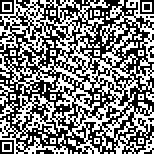| 摘要: |
| [摘要] 目的 分析女性2型糖尿病(T2DM)无症状菌尿(ASB)培养和药敏试验结果,指导临床应用抗菌素。方法 对2010-06~2011-12住院的324例女性T2DM伴ASB患者尿培养和药敏试验结果进行回顾性分析。结果 本组培养阳性率为65.7%,其中G-杆菌占60.7%,G+球菌占34.6%,念珠菌属占4.7%。G-杆菌中大肠埃希菌、变形杆菌居多,对氨苄西林、环丙沙星及复方新诺明普遍耐药,对第三代头孢菌素敏感。G+球菌中以肠球菌属多见,对大多数药物不敏感,对万古霉素极少耐药。结论 女性T2DM伴ASB患者致病菌以大肠埃希菌、肠球菌多见,对多数常用的抗生素不敏感,应根据药敏试验结果指导用药。 |
| 关键词: 2型糖尿病 无症状菌尿 致病菌 抗生素 |
| DOI:10.3969/j.issn.1674-3806.2013.11.24 |
| 分类号:R 97 |
| 基金项目: |
|
| The pathogenic bacteria from asymptomatic bacteriuria and its drug sensitivity analysis for female patients with type 2 diabetic mellitus |
|
ZHAO Yun-hui, LIU Xing-ying, LIU Gen-xian
|
|
Department of Clinical Laboratory,the People′s Hospital of Donggang District, Rizhao City,Shandong 276800, China
|
| Abstract: |
| [Abstract] Objective To analyze the results of urine culture and drug sensitivity test of asymptomatic bacteriuria(ASB) pathogenic bacteria for female patients with type 2 diabetes mellitus (T2DM), and guide clinical the use of antibiotics.Methods Retrospective analysis on the results of urine culture and drug sensitivity test for hospitalized female patients with T2DM associated with ASB was performed from June 2010 to December 2011.Results The positive rate of urine culture was 65.7%, of which G- bacilli accounted for 60.7%, G+ cocci accounts for 34.6%, candida accounts for 4.7%. Most G- Bacillus were escherichia and coli,proteus, which had drug resistance to ampicillin, ciprofloxacin and compound nuomingduo, and sensitive to third generation cephalosporin. G+ cocci, most of which were enterococcus were insensitive to most drugs and were very little resistant to vancomycin.Conclusion For female patients with T2DM associated with ASB, it is common to see Escherichia coli and Enterococcus in Pathogenic bacteria, which is insensitive to most commonly used antibiotics. Drug use should be guided by the results of drug sensitivity test. |
| Key words: Type 2 diabetes mellitus(T2DM) Asymptomatic bacteriuria(ASB) Pathogenic bacteria Antibiotic |

